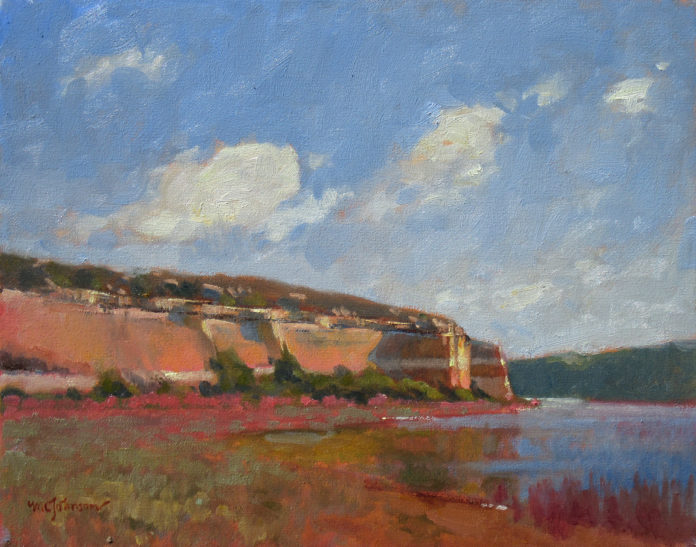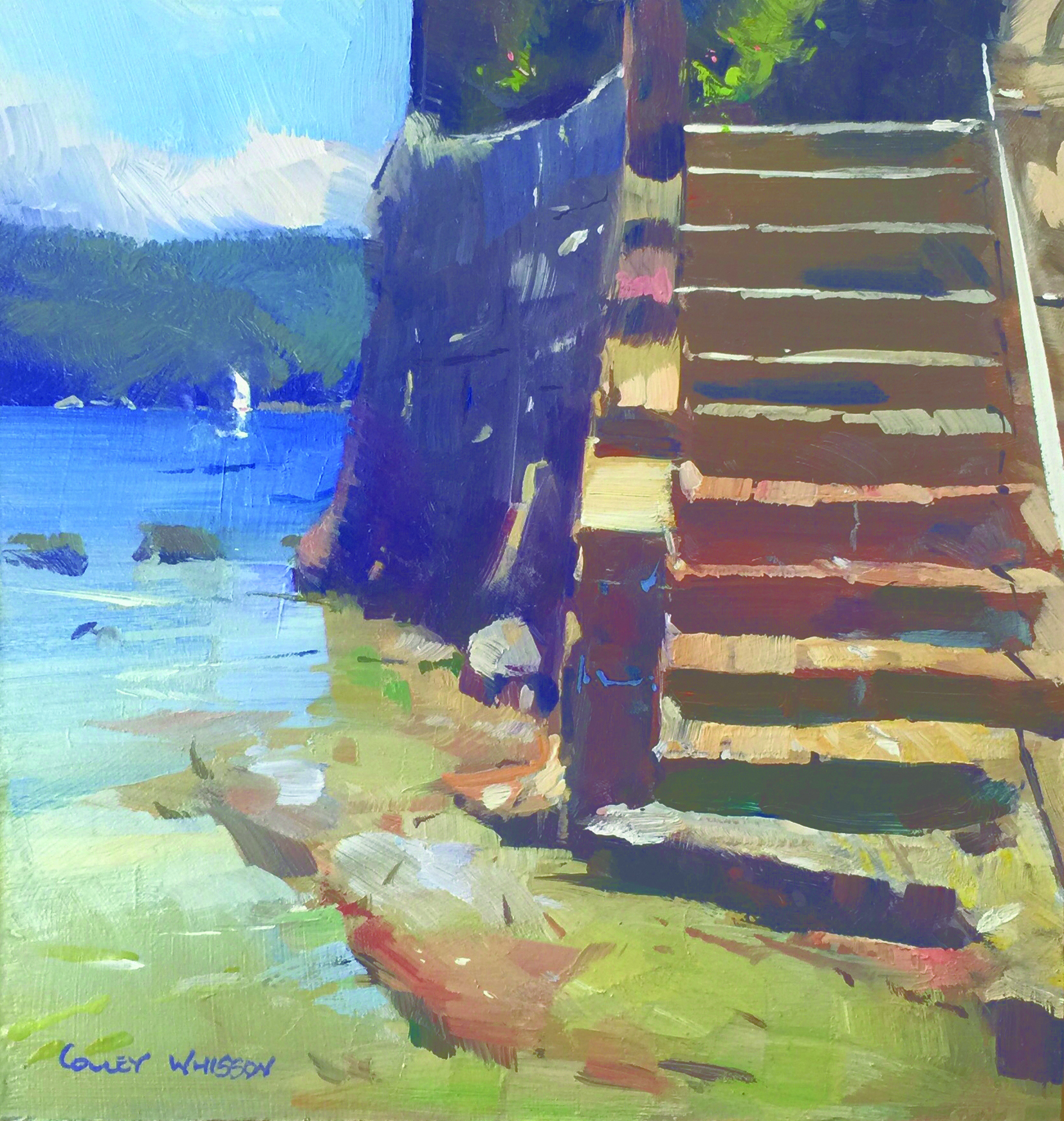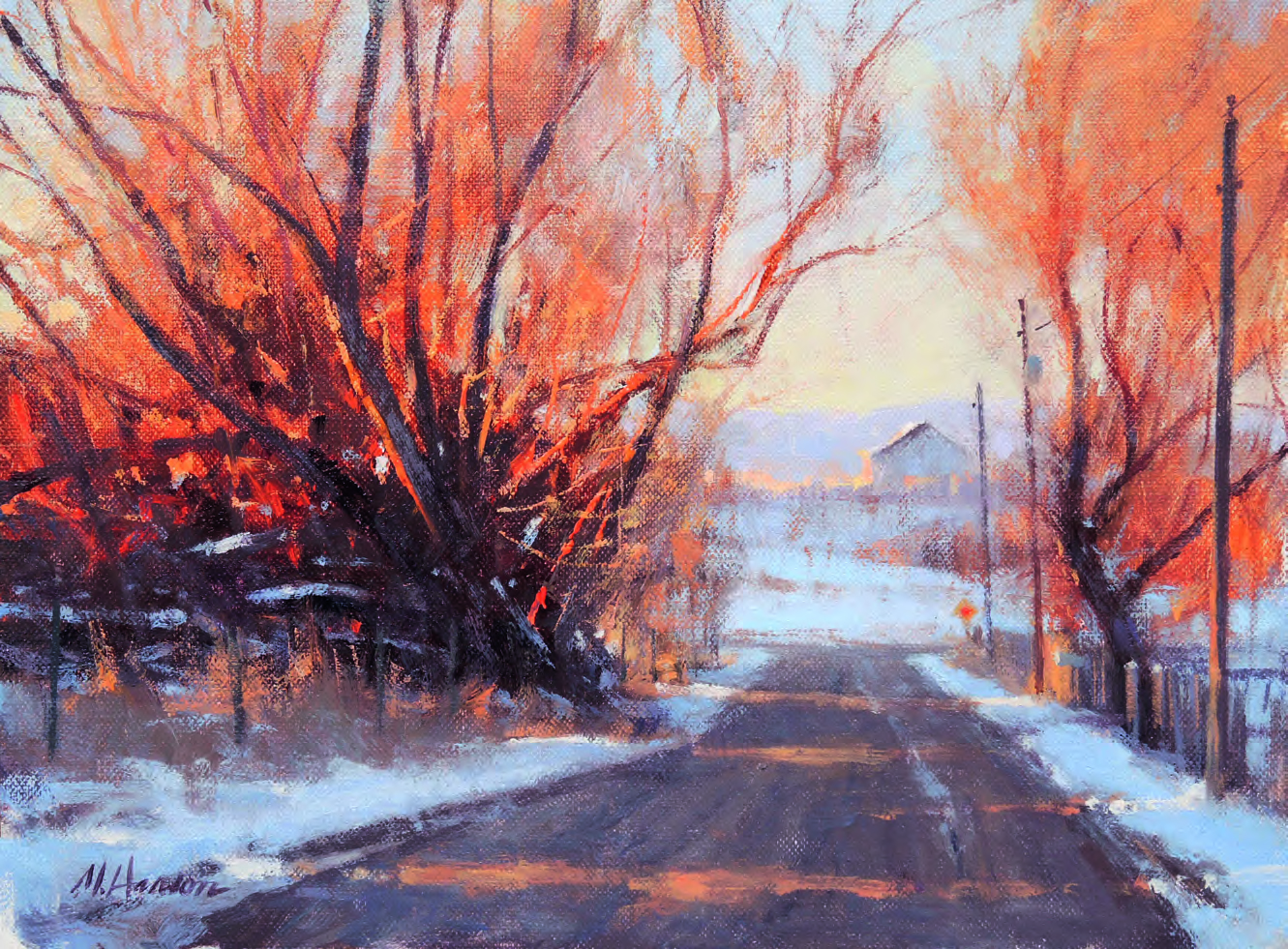
In this excerpt from “Beautiful Landscape Painting Outdoors: Mastering Plein Air,” Michael Chesley Johnson explains how to finish a painting, and three tricks to help you decide if it’s complete.
Related > Michael Chesley Johnson is also on the faculty of the 2nd Annual Pastel Live virtual art conference, August 18-20, 2022 – join us!
Refining and Finishing a Landscape Painting
by Michael Chesley Johnson
You’ve spent time working out ideas with value sketches. After finally settling on one, you copied the design over to your painting surface. You blocked in shapes, not worrying too much about getting colors exactly right. Next, after comparing your painting to the scene, you created a mental priority list of what needed adjusting. Because time was passing, you started with the most urgent first. Now you can step back and congratulate yourself. But what else needs to be done?

To some eyes, this painting might look unfinished because of the looseness of the brushwork. But Colley successfully captured the feeling of strong sunlight, and if that was the goal, the painting is complete.
Knowing When You’re Done With a Painting
What to do next and when to stop are frequently asked questions in workshops. In some ways, knowing when you’re done is intuitive—you just have a feeling. But it’s a feeling that’s gained with experience. Beginners rarely have it. They go too far, or they stop too short. Even so, knowing a few basic questions to ask will help determine if you need to do more, or if you need to stop.
Before you pack up and leave, ask yourself if you reached your goal. If your goal was to make a color sketch as a reference for a studio painting, then design and drawing aren’t that important. If your goal was to make a painting to sign, frame, and show, you need to ask yourself a few more questions, such as these:
• Design
Does your design create a center of interest in a way that is balanced but not boring?
• Color
Do your color choices create the mood you had intended?
• Dominance
Do you use the principle of dominance so it supports that mood?
• Distance
Does your painting have depth?
• Edges
Do you use edges in a way that leads the eye through the painting?
• Mark Making
Do you use marks that support your idea and your mood?
• Unity of Effect
Do all parts of the painting seem to create a whole, or does any part look out of place?
Make sure you take care of elements such as design, color, and dominance in the early stages of your painting. Don’t move ahead unless you’re satisfied with your design. Likewise, if you’re not satisfied with your color choices, stop before going further. And since dominance is an important principle in creating design and making color choices, stop if you see a problem there, too. It’s better to plan out design, color, and dominance early in the game.
These things can be adjusted later, of course, but you will find it hard and probably frustrating because you will have to undo so much. If I made mistakes in the early stages, I will take the painting home and, if I feel excited enough about its beginning, I’ll create a new painting based on the old, keeping in mind the problems that need correcting.
Distance, edges, mark making, unity of effect, and other factors are all part of the finish. You can either handle these in the field, or you can wait until you get to the studio where you have more time to address them. We haven’t talked about these yet, so now’s a good time to do so.

3 Tricks to Determine How Close You Are to the End
- Take a photo of your painting, and then use the camera’s settings to view it in grayscale or print out a grayscale version. How are the values working? Is one value dominant? Do the shapes create an interesting pattern? You can also view the image on a computer or tablet. The smaller the image, the better. Ideally, if the design works at postage-stamp size, it will work in your painting.
- Putting the painting in a frame can do wonders to help determine degree of finish. It isolates the painting, letting you see it as a complete whole, unimpaired by visual distractions outside the frame. When I’m participating in a plein air event that requires a high degree of finish, I take a frame into the field and use it to check my progress.
- Turn the painting upside down. Instructors often talk about this approach as a way of checking for design issues. Turning a painting upside down lets you see it with fresh eyes; objects in the painting become unrecognizable shapes. I like to use this method to determine how well I’m handling depth or distance. Problems just jump out.
Connect with Michael Chesley Johnson at mchesleyjohnson.com and learn directly from him at Pastel Live, August 18-20! He’ll be giving a demonstration on how to make a variety of marks with your pastel stick, including special effects.
Visit EricRhoads.com to find out all the amazing opportunities for artists through Streamline Publishing, including:
– Online art conferences such as Plein Air Live
– New video workshops for artists
– Incredible art retreats
– Educational and fun art conventions, and much more.
> Subscribe to Plein Air Today, a free newsletter for artists
> Subscribe to PleinAir Magazine so you never miss an issue




